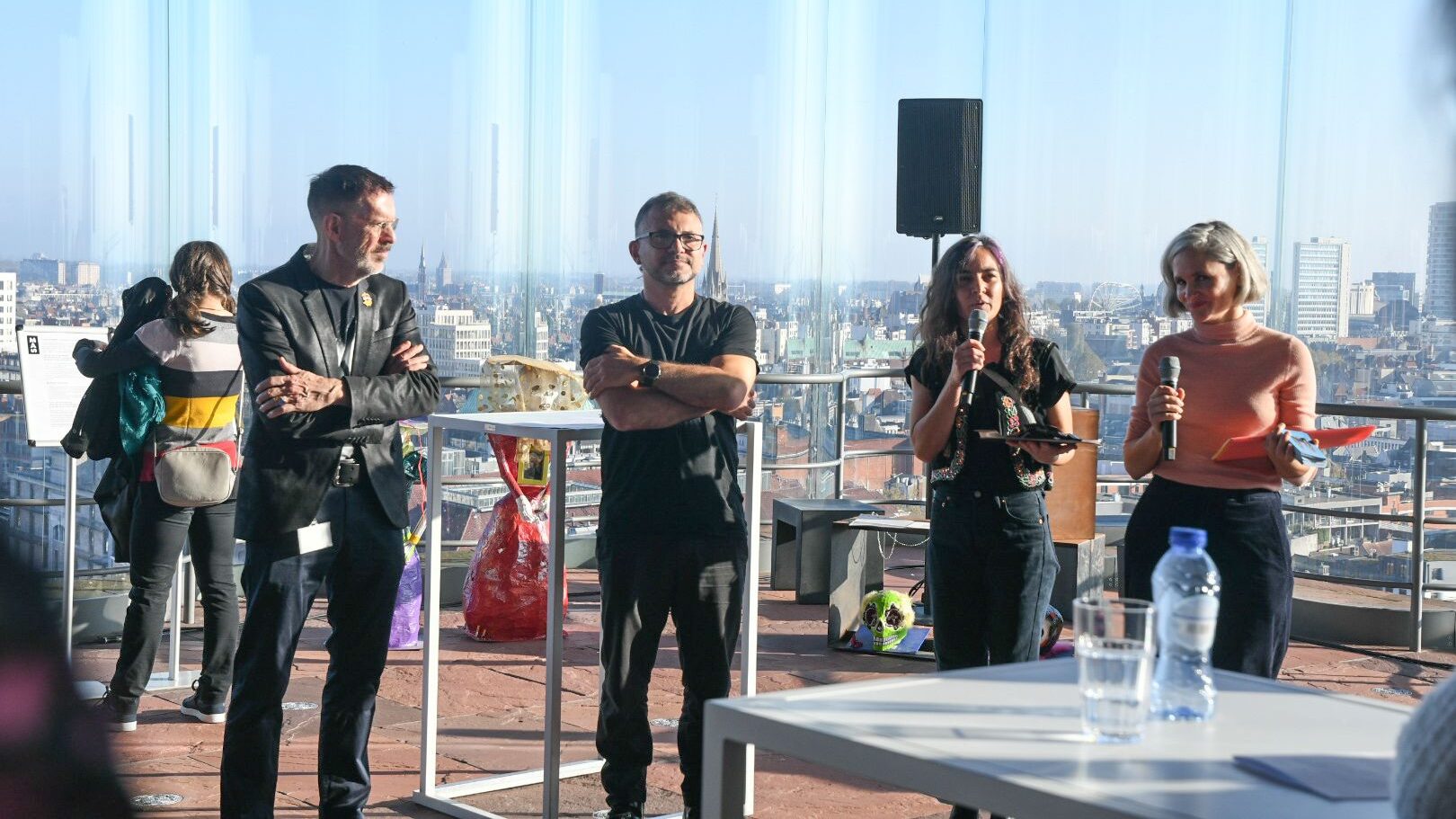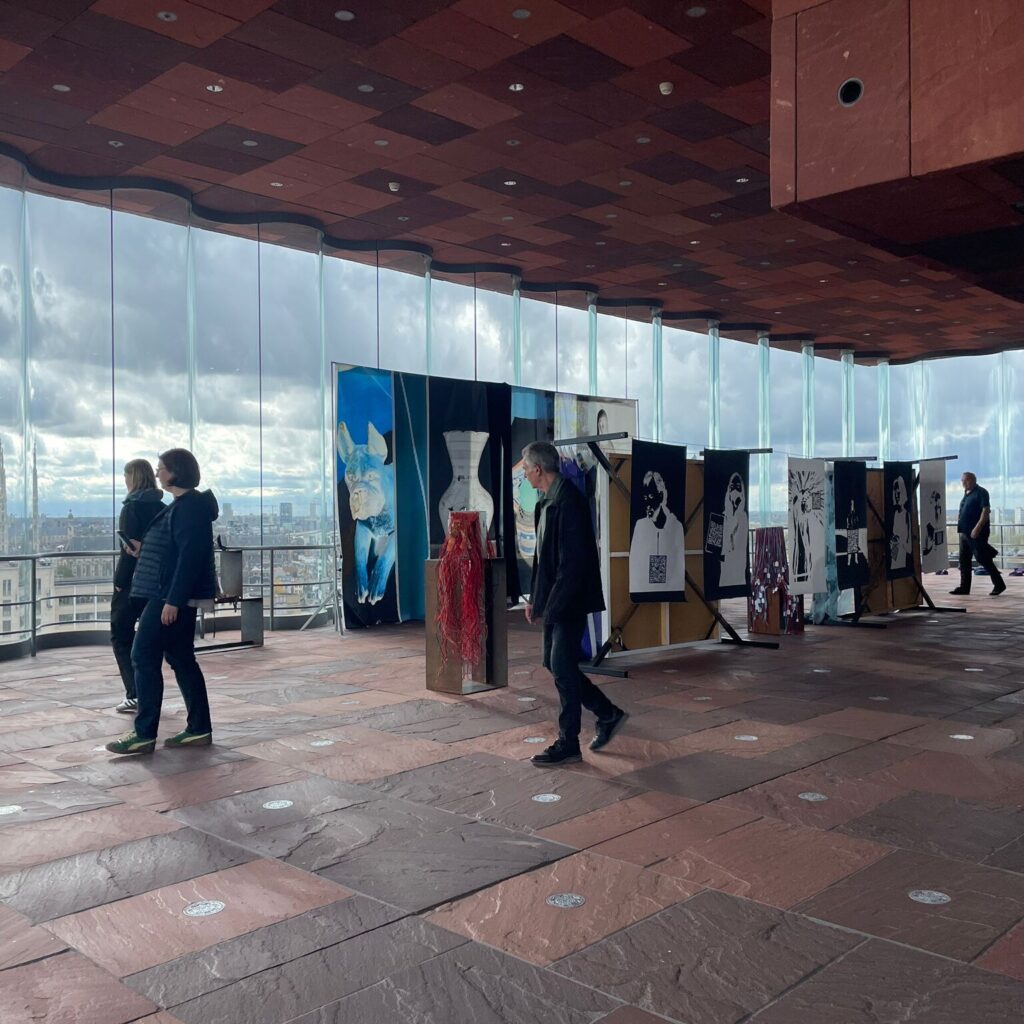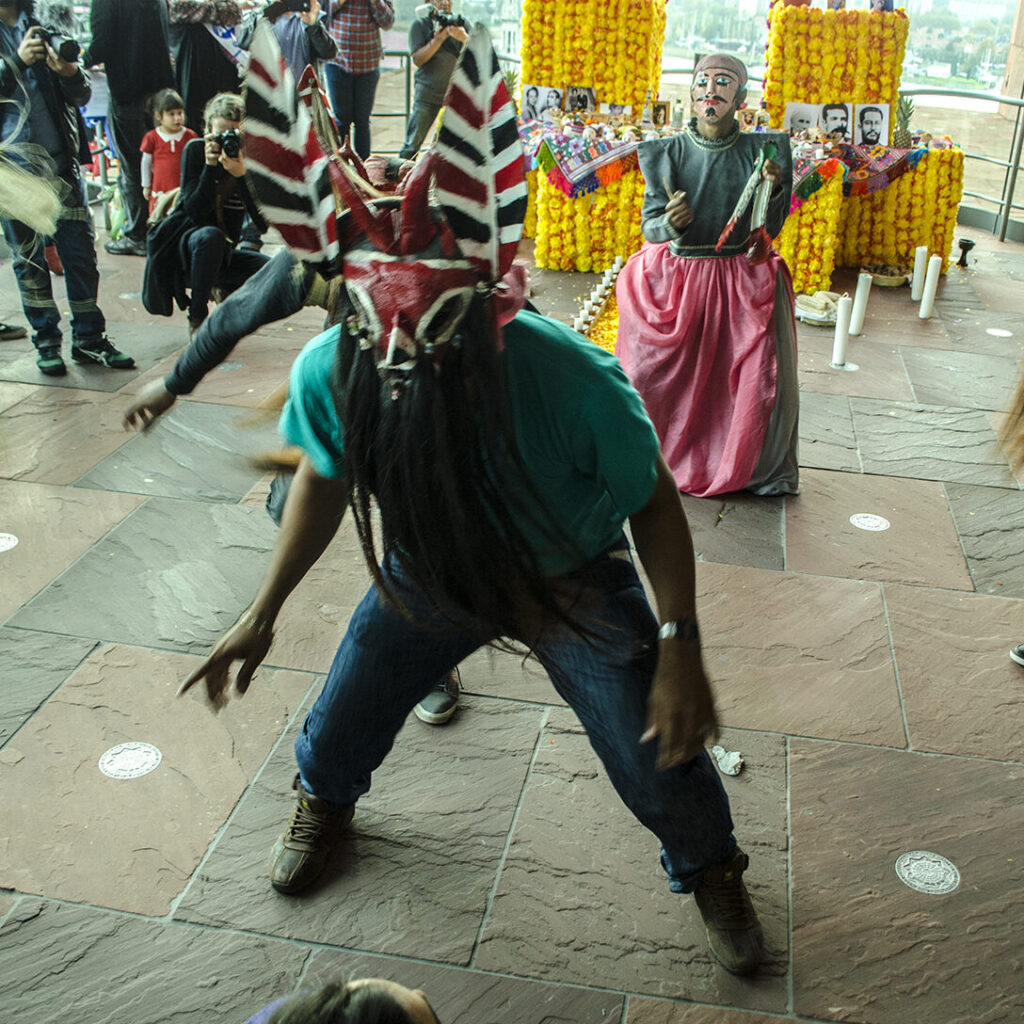Gerardo Salinas – Mestizo Collectief
This page contains the text presented by Gerardo Salinas of the Mestizo Collective at the vernissage of the Altar of Antwerp on 03.11.2024 at the MAS Museum.

By Gerardo Salinas
In the early 2000s, I received an invitation…
In the early 2000s, I received an invitation from the Antwerp cultural directorate to participate in a brainstorming session aimed at defining the profile of the museum the city was building. That museum would become the Museum aan de Stroom (MAS).
I remember that during those sessions, we suggested that it be a museum open to the participation of all residents of Antwerp and functioning as a space where we could see ourselves reflected in a diversity of stories and traditions. However, it was impossible for the museum to meet the expectations of all the city’s residents, or even of all the participants in that process.
Over time, I recalled that invitation to participate and reconnected with MAS to make a proposal. At the Mestizo Arts Platform (then Fiëbre), we had created the Mestizo Arts Festival (MAF), a festival about the city as a source of art, stories, and the future.
At the festival, we began to experiment with Día de Muertos, among other traditions. The last event of each MAF edition took place around October 31, and we found it essential to work with the idea of closure and farewell for the festival. To reflect the festival’s diversity and participatory character, we invited artists and the public to join us, and so began our practice of participatory reflection on loss.
The first event took place in 2011, together with Sindicato Sónico, and we organized a Día de Muertos celebration. During that event, we exhibited “las cajas” by Patricia López and set up a traditional Mexican altar with Silvia Reyes from the Mexican Embassy, who brought pan de muerto. We added elements, including a “Gauchito Gil” from the Río de la Plata tradition.
In our artistic collective, we work with traditions and cultures from Latin America as elements of creation and social action, which we call “social technologies.” In short, we are convinced that cultures develop in specific places in response to the challenges and needs of their communities. When emigrating, we take those traditions and ways of seeing the world with us. We believe that it is possible to apply some of these cultural elements to tackle challenges in the new context or simply to enrich the local culture. This is how the Altar was born.
In our secularized and hyper-materialistic society, we find it very difficult to cope with loss. This inability to accept losses and changes, we believe, causes frustration, fear, and, consequently, isolation and distrust toward others. Therefore, we thought it would be valuable to share how, in Latin American popular culture, we use our ancestral traditions to relate to loss.
With this popular knowledge, we decided to create an interactive installation: the Altar of Antwerp. We believed that MAS was the right place to develop it. I remembered the invitation for citizens to participate in the museum.
The Altar of Antwerp would be built up year after year in an eclectic and participatory way. As part of the installation, we asked the Mexican embassy to curate and build a traditional Mexican altar each year, which we would present in the same space. The idea was to highlight one of the sources of inspiration and present the tradition in its most popular form. Sylvia Reyes was essential to this process, and we had Marta Carmona, deputy director of the National Museum of Anthropology of Mexico, as curator of the first traditional Mexican altar. Over time, Verónica Ahumada continued to support this initiative.
The Altar of Antwerp was first installed at MAS in 2012. We developed it conceptually with Lucila Guichón and Joana Rossi. We asked Patricia López to add the first images: the catrinas. We organized participatory workshops. The following year, Patricia created the skulls, which were worked on by the participants.
The idea was for them to keep the pieces at home and bring them back each year to build the altar, making their homes part of the repository of cultural heritage exhibited at MAS. In 2014, Patricia could not participate, and we began inviting other artists.
The Altar of Antwerp was always presented with a festive event. Lieve Willekens and Tammy Wille were our first contacts at MAS and saw the potential of the project from the beginning. It was not easy to convey our vision of the altar; we were often seen only as a citizen participation event, a strategy to attract a new audience.
During those years, we invested much time and resources from the Mestizo Arts Festival. At the end of each edition, we transported the elements of the altar on our bicycles and stored them in a space in the Arenberg Theatre, where my office was located. One year, we had a mouse infestation at the Arenberg that devoured part of the altar. The following year, the altar was incorporated into MAS’s permanent collection, and the fragments that were left to the mice became museum pieces that would now be preserved at MAS. We felt that people were beginning to understand the meaning behind the project. The presence of Vincent Boele as the new curator of the eighth floor was crucial in this.
Our project addressed various research questions:
How can space be created for the participation of citizens and diasporas in a major institution? How can something that changes be “conserved”? How can responsibility for a part of the collection be shared with an external organization composed of diaspora artists? How can a decolonizing narrative be built between the collection of Dora and Paul Janssens Aerts and this product of the Latin American diasporas?
This story is filled with idealism, good intentions, but also frustrations and obstacles. Over the years, dozens of artists and citizens have participated, we have collaborated with various institutions, and we have been recognized as an exemplary practice for intangible cultural heritage in Flanders. We also contributed to opening a decolonial perspective on the exhibition on the eighth floor. The practice of the Altar was presented at professional meetings, creating a specific dynamic of interaction and thus opening a space that had not previously existed.
After much effort, working with enthusiasm and perseverance, we think it is time to conclude this phase of the Mestizo Collective with the Altar of Antwerp. The interaction between one of the city’s largest institutions and a collective of Latin American diaspora artists was exhausting. But it was worth it. We dared to experiment with the possibility of institutions that are more open to participation and engaging in a dialogue about their content. This acknowledges the role of popular cultures and the transformative power of the cultural heritage of migrations.
The concrete results are: the Altar as part of the collection, participation in the dossier to reconsider the collection of Dora and Paul Janssen Aerts, and the participatory mission that now seems self-evident. The annual development is documented in the Altar of Antwerp catalog.
We believe that nothing is lost. Everything is preserved in memory, and the Altar is a gateway to connect with who we were, understand who we are, and work toward who we want to be.
We hope that the Altar continues to evolve and that new forms of citizen participation will continue to be explored.
With much love,
Gerardo
Hoe “conserveer” je iets dat verandert?

Op 3 november 2024 sloten we een lange werkperiode af in het MAS Museum.
2011-2024
Altaar van Antwerpen

